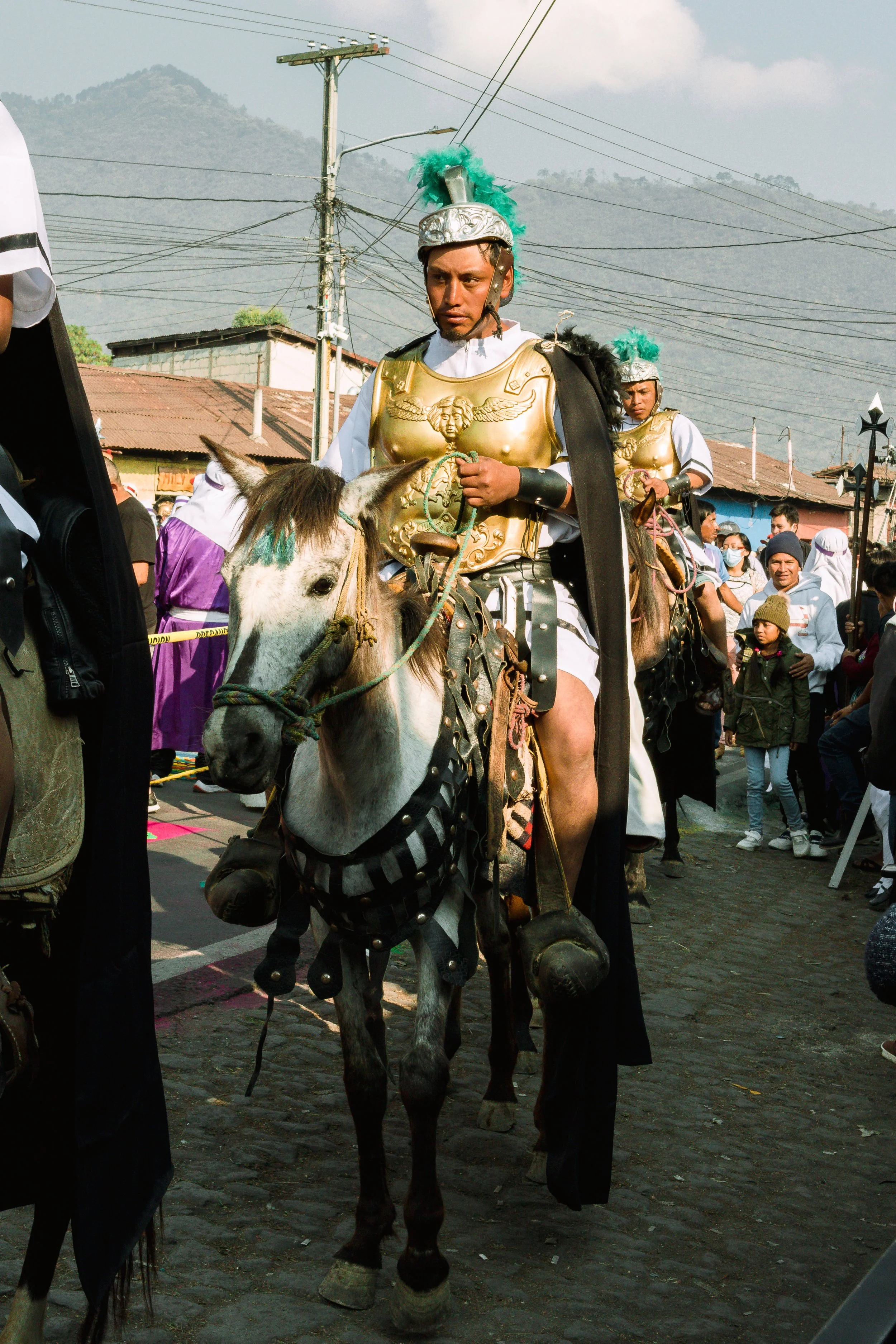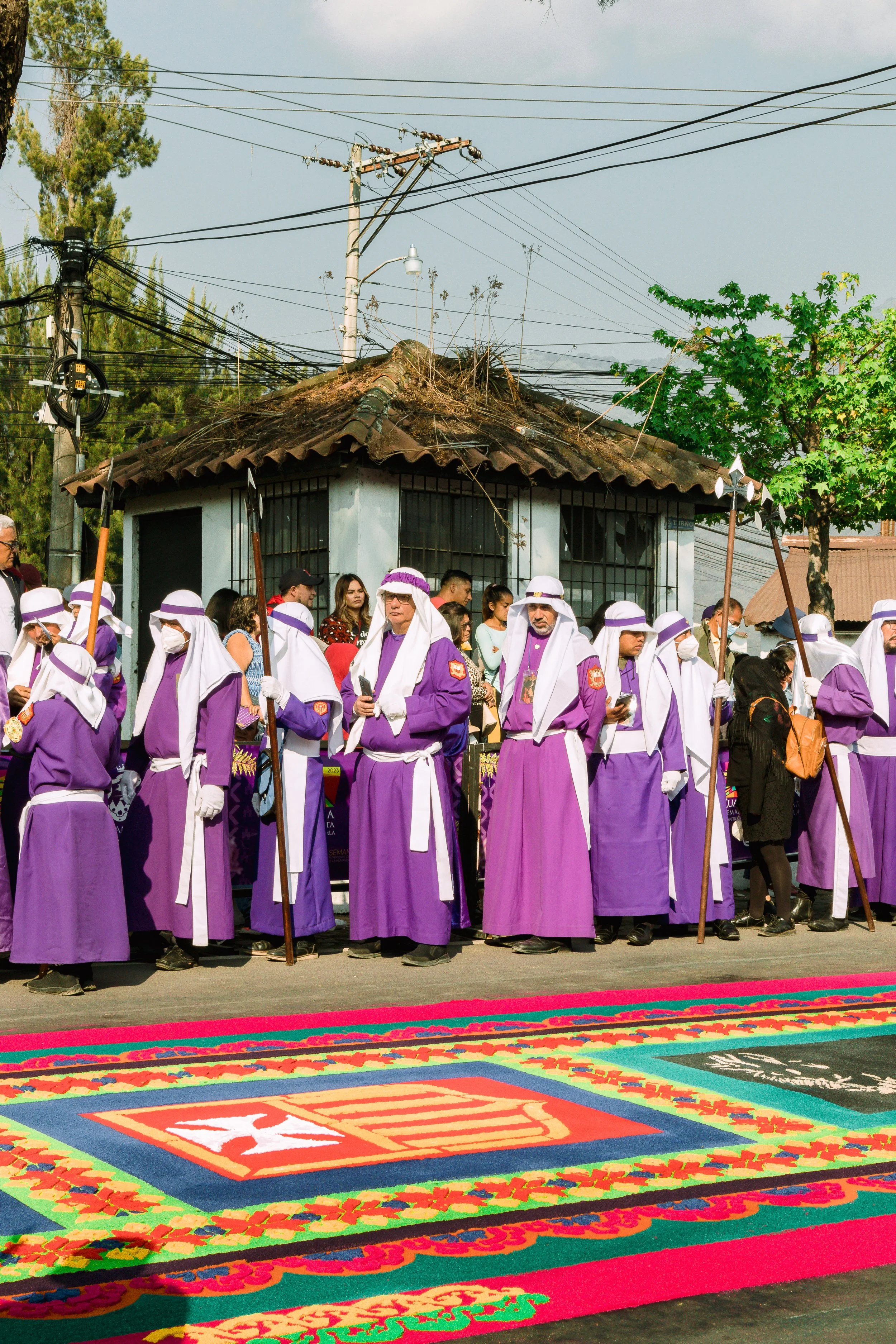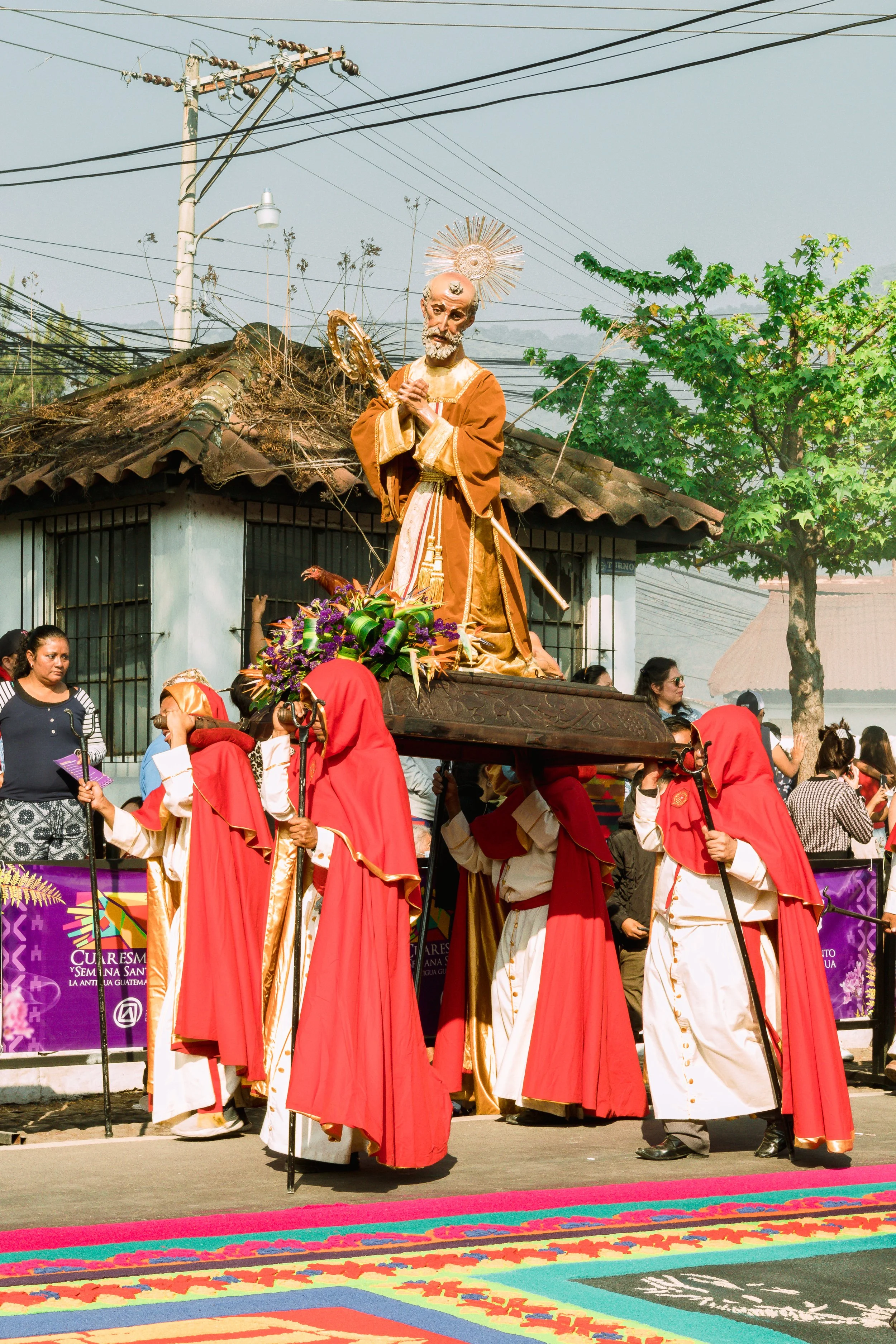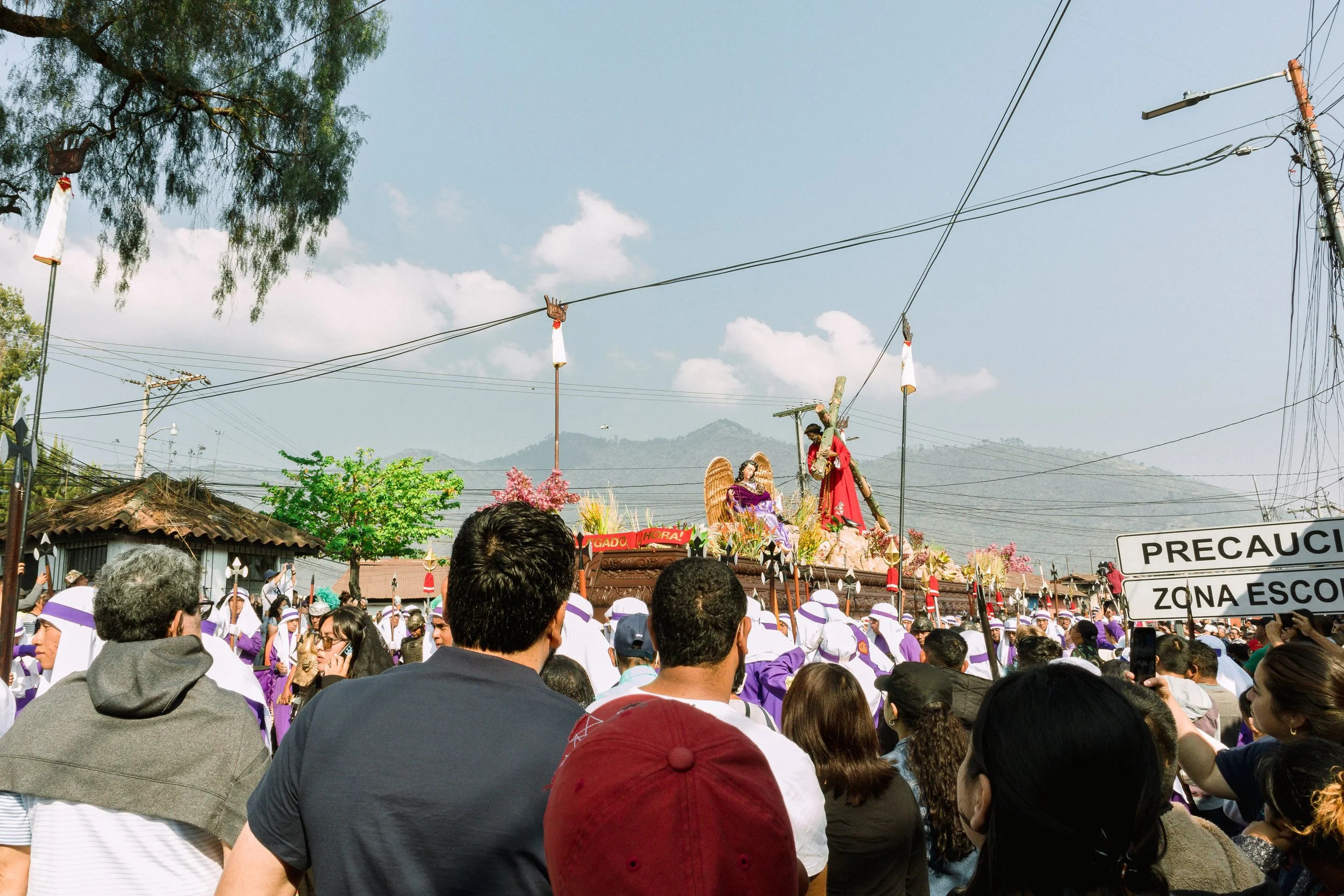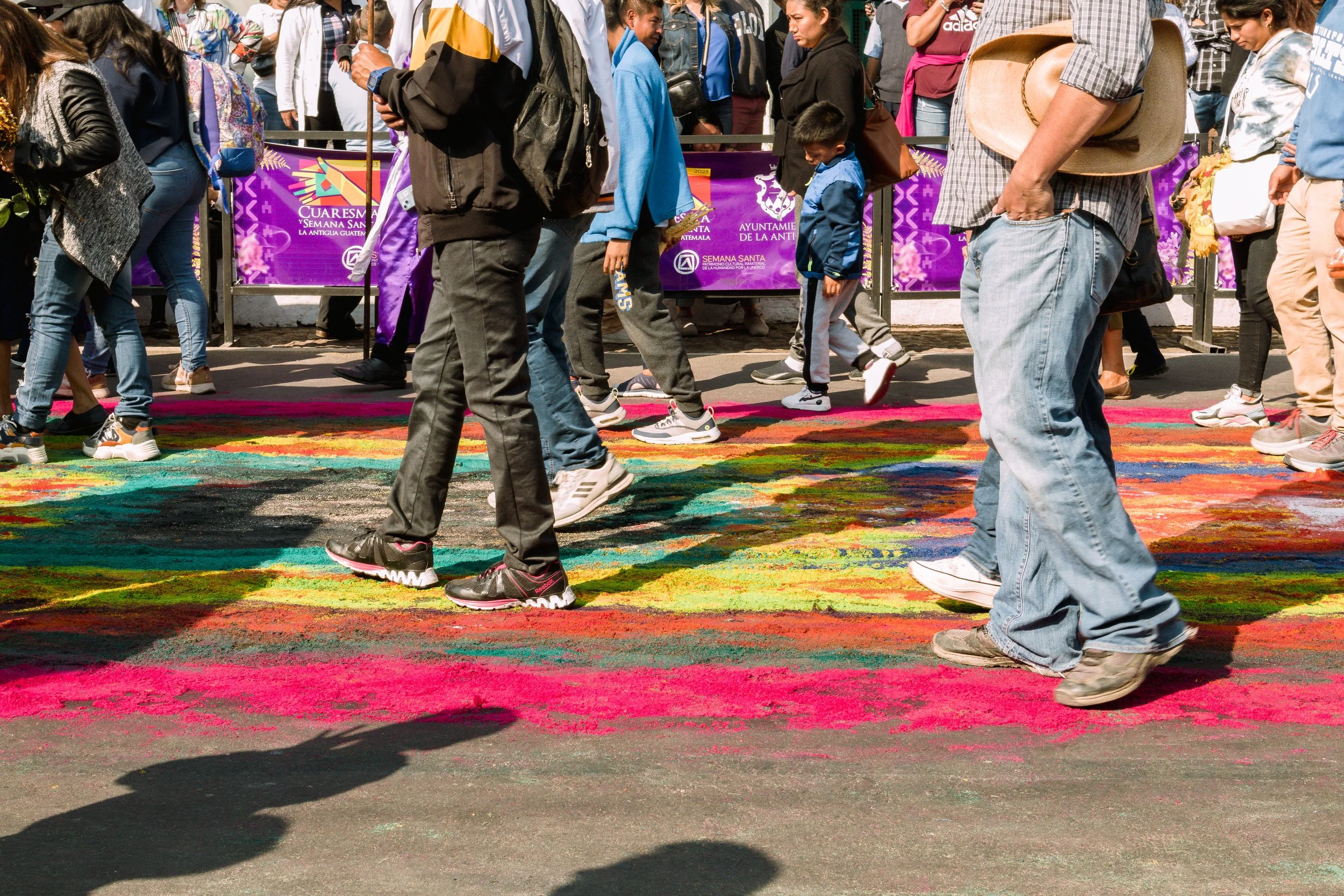Alfombras in the Streets
I was sweating as I made it through TSA, juggling bags, my ID, and the feeling that how dare all these people walk so close to me. The airport terminal had low ceilings, white floors, and bright lighting. Instead of sitting down and gathering more butt sweat on those ubiquitous leather airport chairs, I walked. When I’m in airports, I walk. Others may call it pacing, the repetitive, somewhat unhinged pattern of taking steps from one point to another over and over again, but I call it walking.
I passed a Hudson News, browsed the books, and continued on. As I walked, I talked myself through the chaos in my head, attempting to tame the tide of cresting anxiety. You are fine. You are healthy. You are smart. Planes don’t crash that often. Pacing the sterile, overcrowded Seattle International Airport terminal I tried to convince myself that an eight-hour journey would not result in my ruin. I boarded the plane as the sun peeked through the clouds hanging low over the Puget Sound. The plane took off with no issues. I read a book, I napped, I watched part of a movie, and then landed down in a country I’d never considered visiting until a few months before.
I stepped with trepidation across the SALIDA line on the floor in La Aurora International Airport in Guatemala City, leaving behind a plan that could take me home. I spoke in Spanish to passport control without any thought. I felt the warm air and promised myself, I will be happy. As if transported through a portal into a different world, I became who I was and who I am, but who I had lost. People are always encouraging others to ‘find themselves.’ But, no one tells you what to do when you forget who you are and how to do what you love without four panic attacks. No one has a playbook for getting back to happiness.
That was my goal for the New Year, to be happy. It was April in Guatemala City and for the first time, I was thinking I might actually achieve this goal. I’d tried a lot of different things to find happiness. I’d read 100 books, backpacked for days on end, and got another master’s degree. All of these things did make me happy. Books, the outdoors, and learning are core to what I love. But nothing was sustaining happiness. A book would end, and I would be sad. The backpacking trip would end and I would immediately try to find another to pack for. Classes were good, but they were sometimes too much of a reminder of the life I used to live. I wanted my resting state to be happy.
Some people say, well happiness is a choice. CHOOSE JOY! Life is beautiful! There’s a million of those cliche white ceramic cookie jars from HomeGoods screaming BE HAPPY in thick black letters. I am genuinely thrilled for those who have found happiness in a cookie jar. Who this doesn’t work for is a depressed, anxious, PTSD girlie--me. My homeostasis was high heart rate (or very low because I also took up running in my season of searching for happiness, causing my resting heart rate to drop which I discovered is normal after a phone call with my health nut sister who convinced me a 48 heart rate while sleeping will not mean imminent death), catastrophizing, and avoiding anything that reminded me of before.
When I landed in Guatemala, I promised myself to try it all and do it all. To not let my overactive brain keep me from the things I loved. It was a good thing I hyped myself up before getting to the airport, because when I got my bags and connected to WiFi, I discovered half a dozen WhatsApp messages from my host in Antigua saying the driver slated to pick me up got in an accident so her cousin would be coming.
It was 9 PM in Guatemala City, apparently late for this airport because I was the only one waiting on the curb. I asked my host for the license plate number of the new driver. I waited. A car pulled up to my spot on the curb right as I got a message with the license plate number. I wondered how the driver knew I was his passenger and then I realized I wasn’t just the only one at the curb but very obviously a white American waiting for someone.
The license plate of the red car matched my most recent WhatsApp message. I greeted Raul, and we embarked to Antigua, my two suitcases crammed in the backseat of his exceptionally small manual car along with a large dose of anxiety. Driving the winding roads out of Guatemala City, every minute without catastrophe eased my anxiety to a degree. As we drove, I thought of the many harrowing travel moments I’d had that were actually anxiety-worthy but had not been in the moment. Running to catch planes, getting lost in foreign cities, driving across a state with guys I met a day earlier, getting stranded with no ride in a million places, traveling for 36 hours alone to the continent of Africa, and more. Those things were just part of the life I loved, except two years of not traveling and COVID turned the chaos of travel from an exciting promise of adventure to a promise of certain death.
I had fallen out of love with not just travel, but many of the things that shaped me completely. And I had to fall back in love with it all again. I forgot I was good at things, that I was capable. I had to be reminded again and again. I had to stop living in the pain of the past, and instead live in the confidence of the past.
After an uneventful hour in the car with Raul, I was dragging my suitcase across the cobblestone streets of Antigua into the artist residence house I would inhabit for the next two weeks. I had two weeks to spend exploring and creating as I wished. I slept soundly in the casita nestled in a neighborhood on the North West side of Antigua.
When I departed my casita at 8 AM, the streets were still quiet. As I approached the main road, I saw small groups of people hunched over alfombras, rugs made of sawdust, and other natural materials in the middle of the street for Semana Santa, Holy Week. Every house, business, or person can make one. Roads are barricaded off with cones or chairs or whatever else can be found to protect the alfombras and their makers. Once constructed with detailed patterns of flowers, birds, and Jesus Cristo, the alfombra will remain undisturbed until a procession, parades of song, and iconography of the story of Jesus, His death, and resurrection.
These Semana Santa traditions of alfombras and processions derived from the Spanish are shared by both the religious and non-religious alike, the Mayan and Ladino. People travel from all around Guatemala to line the streets waiting to see life-size figures of Christ, Mary, and the Saints, being carried upon Guatemalan’s shoulders.
I had woken early enough to have an hour to browse the alfombras. I walked, as I do, and learned the art of creating an alfombra.
With the precision of a master architect, the plan had been drawn weeks before. Then, intricate stencils were cut out of sturdy cardboard, the patterns rendered with near-perfect symmetry. People move like bees, each with an individual job while also working together with minimal conversation. They are quickly cultivating their honeycomb of vibrant hues. There was a rhythm to everything I was seeing. Despite only half an hour until the procession was due to arrive, the careful art was unhurried. Pour, shake, tap the sieve on the road, and repeat. Carefully lift long stencils, again and again, leaving thick shapes. The pounding of drums in the distance announces the coming procession.
Caution tape is removed from around the alfombra, the worker bees now moving faster in succession to the growing volume of the drums. Water is misted over the design to hold it in place for mere minutes. A quick photo is taken of the team as the Roman soldiers with horses round the corner.
Ten minutes later, the alfombra is a swirling mess of pink, orange, yellow, and green, there is now a watercolor in the streets. Men carried the Christ figure float upon their shoulders swaying side to side, shuffling and dragging their feet across the alfombra. Yellow corn meal used to create flowers swirls into the air, fruit and seeds and dried beans scurry in all directions. Just as the alfombra was made rhythmically and methodically, so it is destroyed.
I saw the detritus as art.
And I realized this was how I used to look at the world, the way of seeing that I felt I had lost. The way of seeing that had birthed paintings and sculptures and writings and joy to just make something. I returned to my cool casita to paint. For the first time in a while, I felt like I finally remembered the feeling I wanted to bring with me into the act of creating. Not anxiety about the result or what it could result in monetarily. I considered the hours and hours beginning in the dark of the night required to make an alfombra. It was a beautiful piece of art, but more than that it was an offering of people’s time and creative energy. People created something only for it to be destroyed and were thrilled by the whole thing. This threw into stark contrast the mindset of ‘be unmarred’ that I had maintained through the COVID years. Be unmarred by COVID, unmarred by the stress, unmarred by all the things lost--the remaining unmarred had instead unraveled me. In the streets of Antigua, the ruin was the purpose of the beauty.
I didn’t have to be the greatest artist, I didn’t have to get published or shown in galleries, I didn’t have to have photographs taken and five-star reviews, I didn’t have to strive for the put together-ness I had been seeking in so many areas of life, I just had to create. I needed to throw paint, cut paper, bend wire, sketch, and mold, because that was where happiness lived, right in the middle of the mess. I needed to take the unraveled threads and weave something new.
In my little studio on a wobbly wooden table alone in Central America, I dipped my brush in the water, then in the yellow and orange paints, mixing a color to match the alfombra that had transfixed me. I hesitated for only a moment, then let brush hit paper. I painted, not as I had before, but with a newfound guiding ideal: It didn’t matter if there was an impending procession coming down the street, the creating was my offering.

















